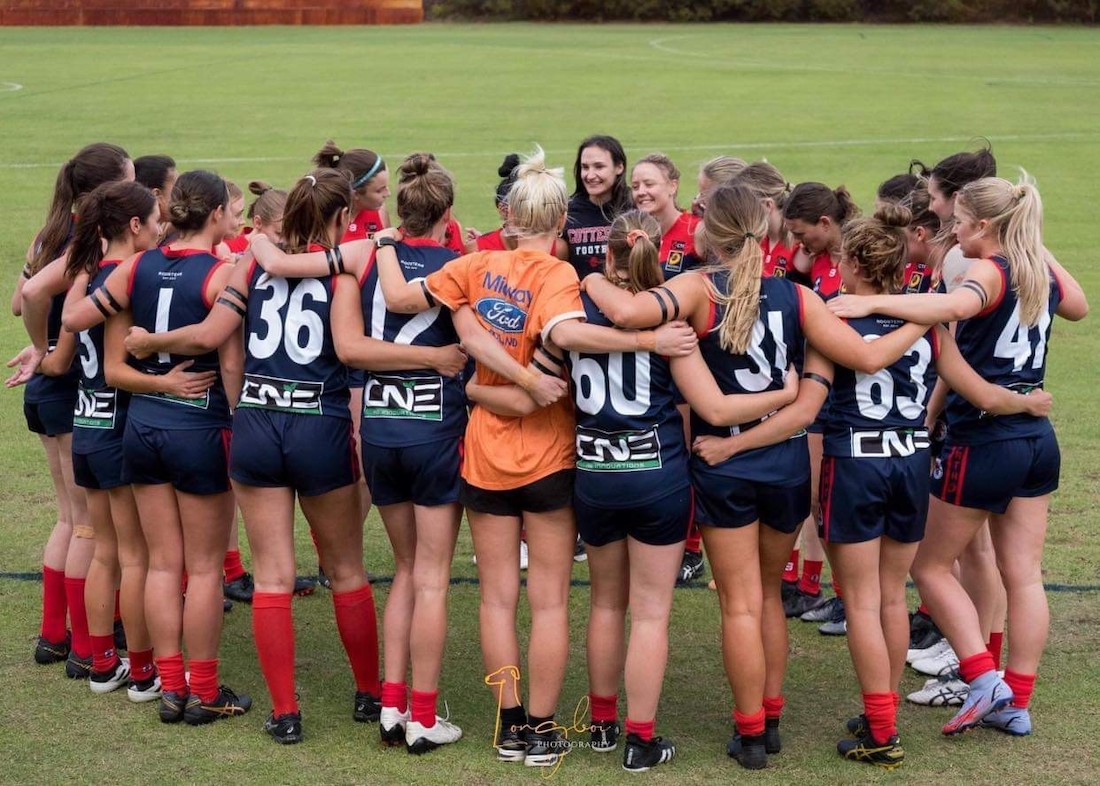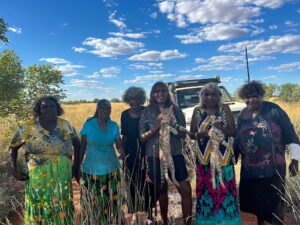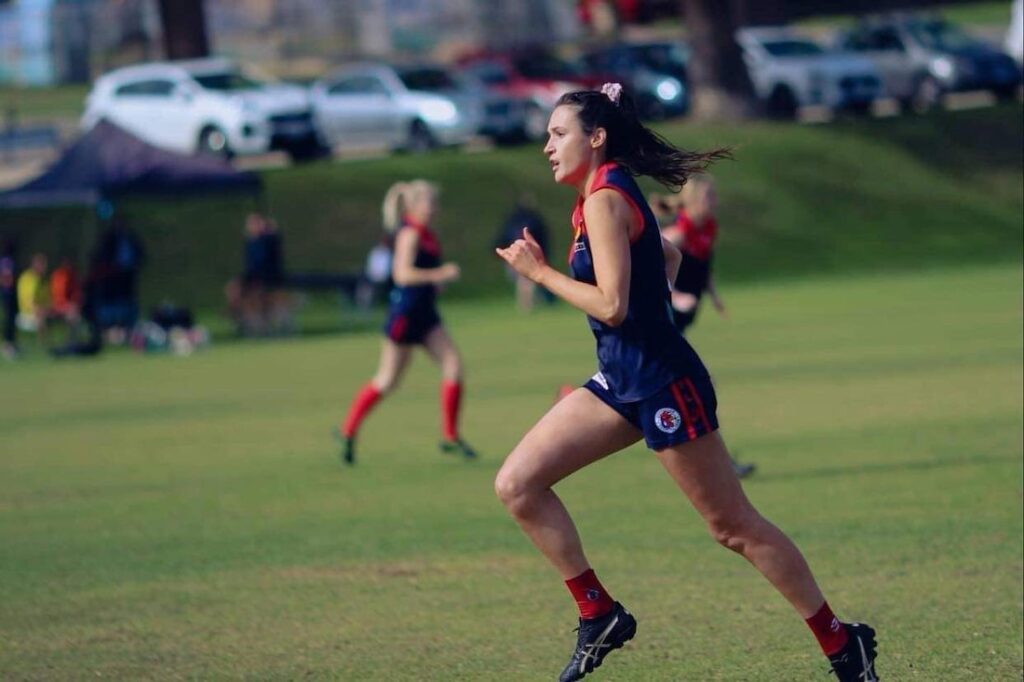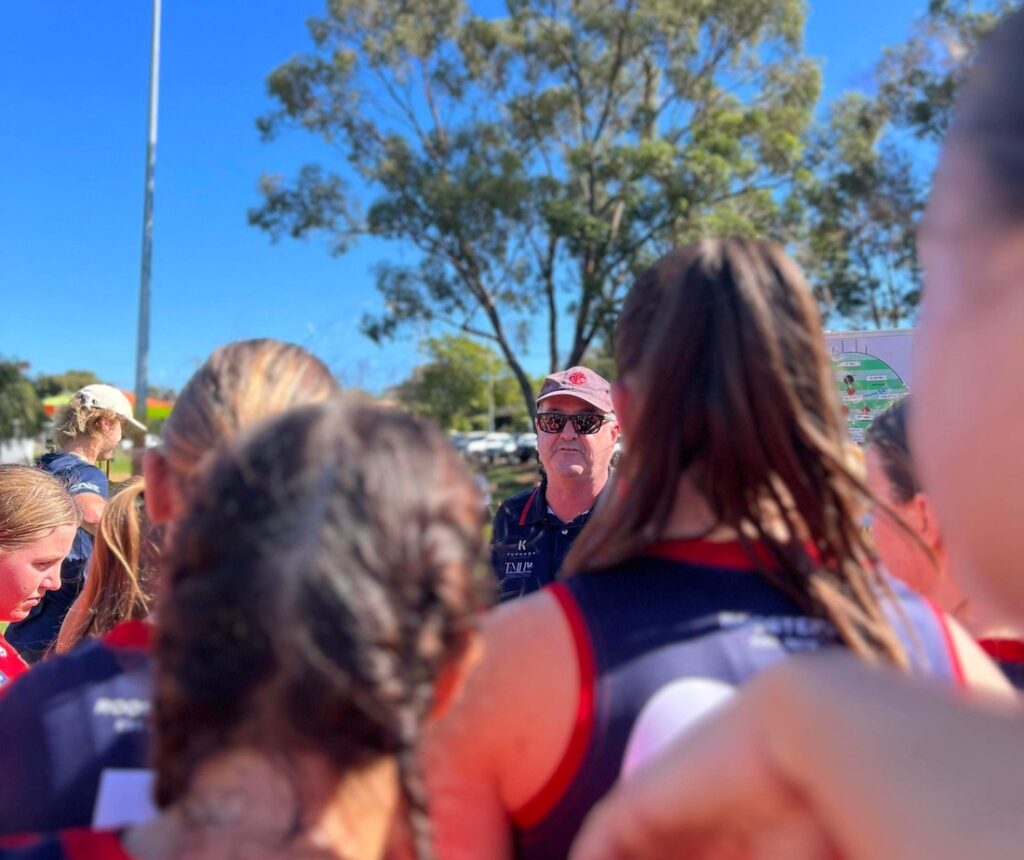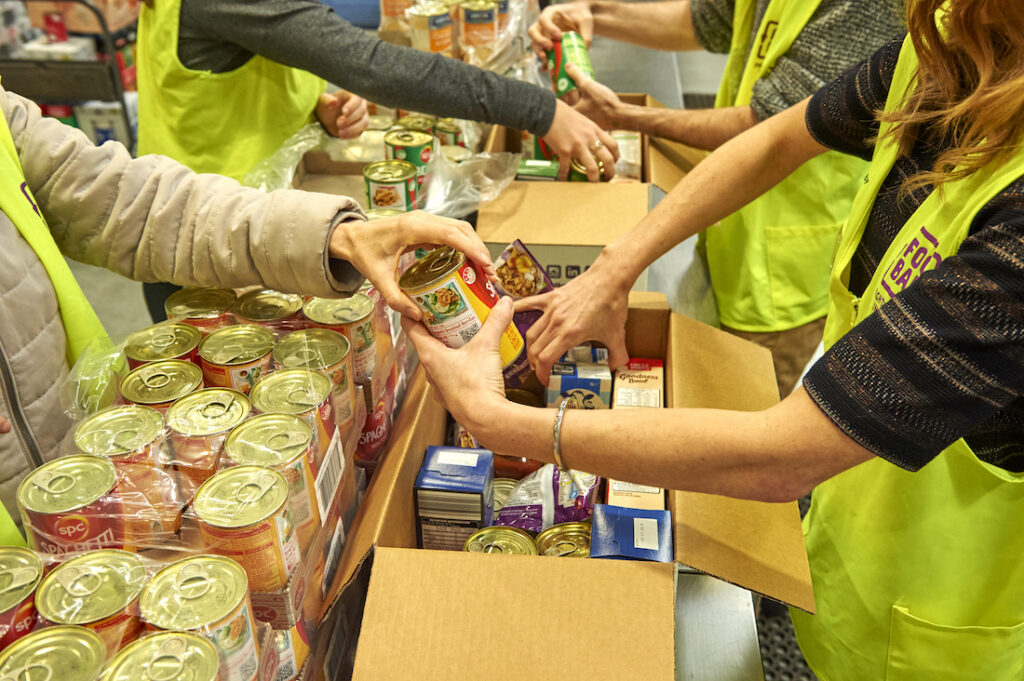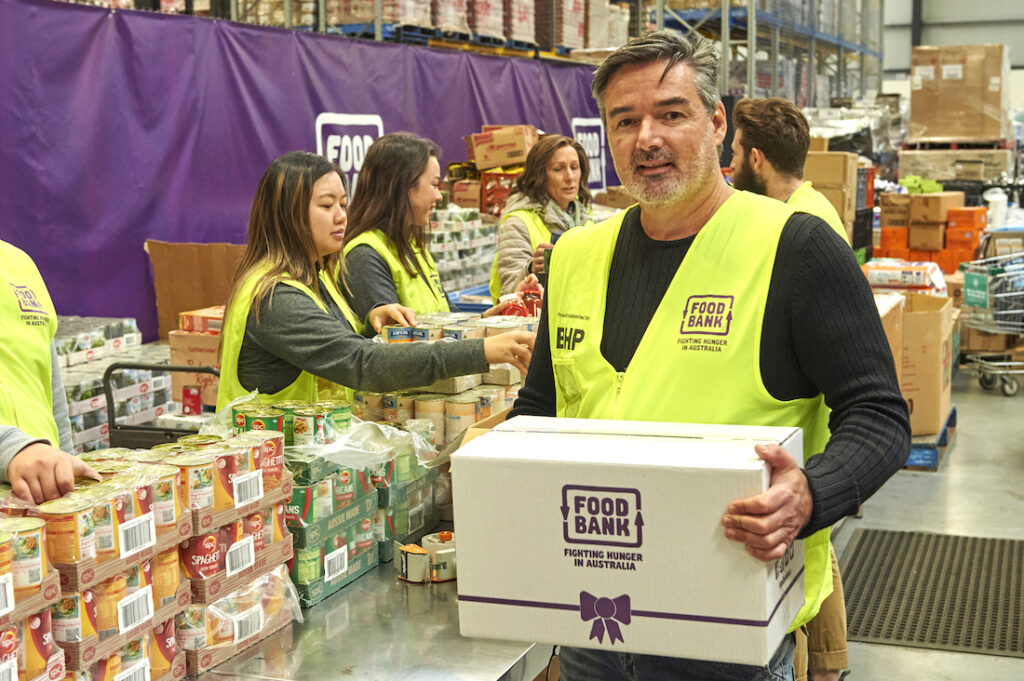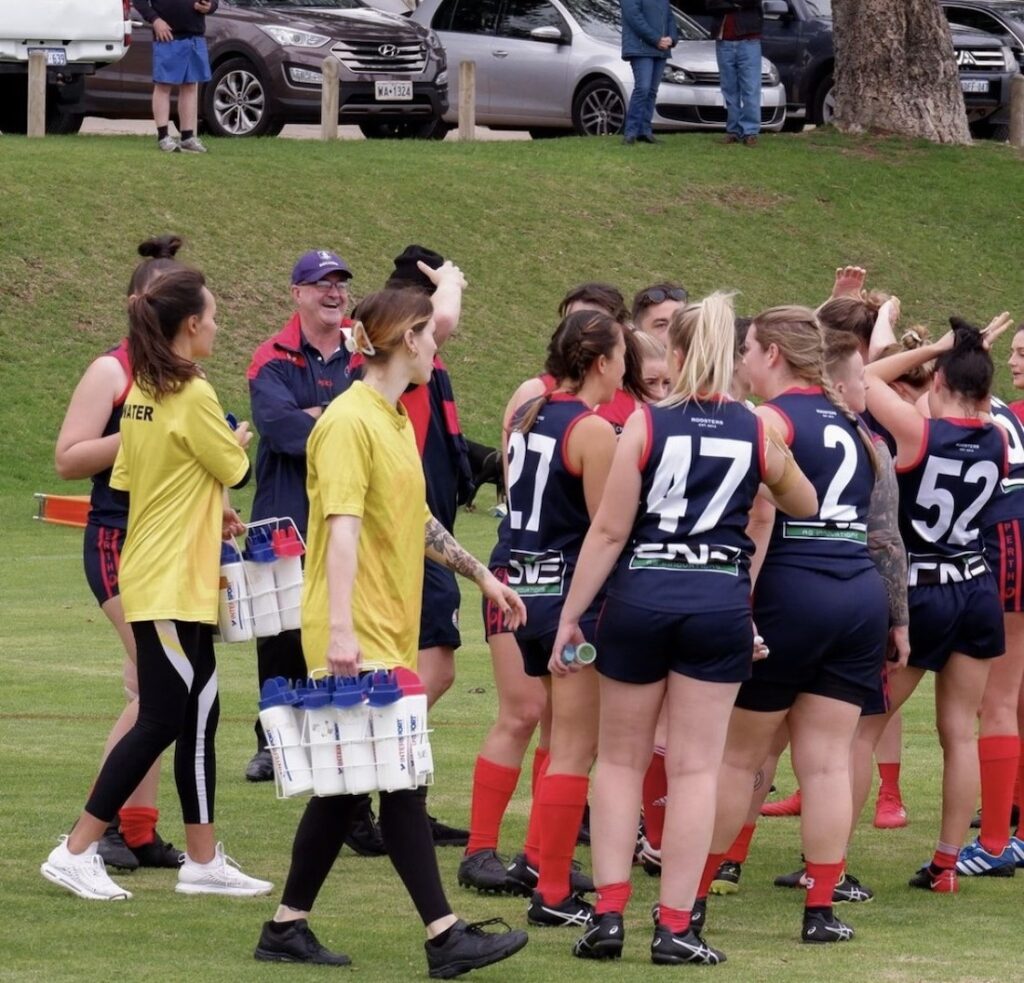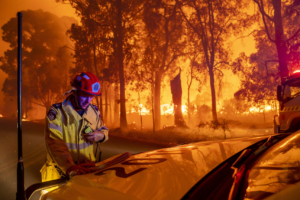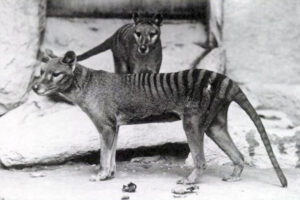As the sea breeze sweeps over the football oval in Cottesloe, dozens of men and women jog onto the field.
Clad in Cottesloe Football Club’s iconic red and blue, players run laps to warm up ahead of the first training session for 2024.
Leading the pack is Laura Dunnett, a club veteran who has captained the women’s side for the past 4 years.
But at an amateur Australian Rules football club like this one, Laura has been more than a team leader.
“I’ve taken on the role as the events coordinator for 2024, but in the past, I’ve also been the secretary of the club,” Laura says.
“These roles have all been volunteer.”
From canteen operators and coaches to water runners and umpires, dozens of people take up volunteer jobs to keep Cottesloe Football Club up and running.
“We’re a pretty young club so we need that support just to help make sure all the jobs – that help us be able to play – are complete,” Laura says.
Without volunteers, Laura says the amateur club wouldn’t survive.
“Everyone at the club pitches in so it’s not put on one person. We’re all contributing to our community,” she says.
“It’s a place that you all love to be a part of so you just want it to work.”
FROM FOOTY TO FOOD
Volunteering goes beyond helping out at a local sporting club.
Many organisations rely on people donating their time to help but none more so than those providing help to the most vulnerable in the community.
At a warehouse near Perth Airport, dozens of people don a fluoro vest ahead of their shift stacking shelves at Foodbank WA.
Up to 200 volunteers regularly help the organisation provide food relief to West Australians under pressure.
As Foodbank CEO Kate O’Hara explains, volunteering here goes beyond stacking shelves.
“There’s a whole army in our community that are phenomenal in what they do to assist us in the food donation space,” Kate says.
“We had some nearly 200 groups, whether that is school groups or church groups, volunteer their time to collect food donations for us last Christmas.”
In a similar story to Cottesloe Football Club, Foodbank WA wouldn’t be able to operate without volunteers.
“The reality of our presence in the community rests very much on the shoulders of the volunteers,” Kate says.
“Without them, game over.”
But it’s not just the local footy club or state-wide support service that benefit from the work of volunteers – there’s benefits for those helping too.
HANDS UP TO HELP
In Western Australia, volunteers collectively contribute more than 400 million hours a year to help their community.
Whether it be helping others and giving back to the community or improving their career prospects and professional skills, people volunteer for many reasons. Some just want to increase their social engagement.
This is reflected in the widely reported list of benefits that include feelings of greater connection to community, improved confidence and self-esteem, and reduced anxiety, loneliness and isolation.
As an international expert in the study of volunteering, Professor Kirsten Holmes says a number of studies have found people who volunteer generally have better health and report higher levels of personal wellbeing.
“There’s some evidence that volunteering does help because it keeps people active. It keeps them connected. It gives them a purpose, and this is often more important in older age,” Kirsten says.
“What we don’t know is which way that relationship goes. So are people with better health and higher levels of wellbeing more likely to volunteer or is it the volunteering that causes that?
“We’re not 100% sure the direction that goes in terms of causality. I think more needs to be done to understand that.”
PEOPLE UNDER PRESSURE
But volunteering does come with its challenges.
People can experience volunteer burnout from their workloads becoming too much – particularly those juggling multiple volunteering roles.
“People who volunteer are usually busy people. So time pressures, other demands on their time from family, from work, is a challenge,” Kirsten says.
“We know that people who volunteer are often volunteering for more than one organisation so that increases the pressure on the availability of their time.”
HELP NEEDED
The challenges are felt even more keenly in rural communities where the majority of the population volunteers.
According to the Bankwest Curtin Economics Centre, more than 50% of people living in rural Australia donate their time to their town.
As the lead researcher, Kirsten says this was unsurprising.
“In rural areas, communities would be very vulnerable if they lost their volunteers,” Kirsten says.
“Volunteers are doing essential things; they’re driving the ambulances, they’re running the emergency services.”
“If there’s a bushfire, it’s the local volunteer team who go around to try and put it out.”
The report found managing volunteer workloads and uptake of information and communication technology were also difficult in rural areas, with the latter caused by rural volunteers having limited mobile phone and internet coverage.
FEELING VALUED
But these challenges are not preventing people from volunteering.
At Foodbank WA, Kate says volunteers can quickly see the value of their donated time and energy.
“When people see the opportunity to engage in an organisation where the impact of what they’re doing is pretty tangible, and for us distributing food is very tangible, it provides a very quick gratification of the value of their time and energy,” Kate says.
For Laura, volunteering at Cottesloe Football Club not only provides a sense of purpose but also creates a stronger connection within the football community.
“It’s a place that you all love to be a part of,” Laura says.
“Everyone’s there for the same common goal.”

Almost 1% of Australia’s total population are volunteer firefighters, a job not made for the faint-hearted.
What drives them? Find out in the second season of the Elements podcast.
All episodes out now on all your favourite podcast platforms.



